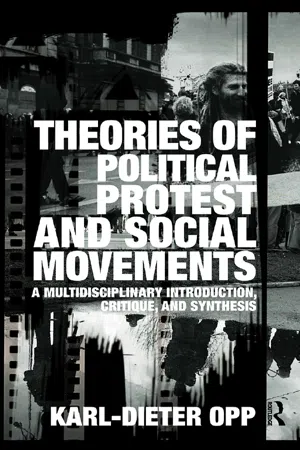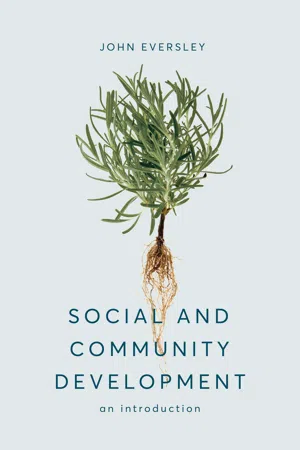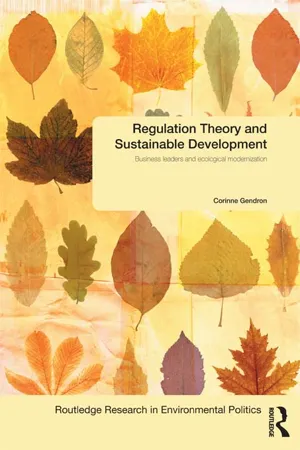Economics
Collective Action
Collective action refers to the coordinated effort of a group of individuals to achieve a common goal. In economics, it often involves collective decision-making and cooperation to address shared issues or pursue mutual benefits. This concept is important for understanding how groups can work together to overcome collective action problems and achieve outcomes that benefit the entire group.
Written by Perlego with AI-assistance
Related key terms
6 Key excerpts on "Collective Action"
- eBook - ePub
The Limits of Public Choice
A Sociological Critique of the Economic Theory of Politics
- Lars Udehn(Author)
- 2002(Publication Date)
- Routledge(Publisher)
An important difference between the economic theory of voting and the economic theory of Collective Action is that, whereas the former assumes that self-interest explains voting, the latter implies that self-interest is not enough for Collective Action. Therefore, considering the amount and importance of Collective Action in the world, this theory does not lend unambiguous support to an economic theory of politics. Quite the contrary, the existence of Collective Action ‘stands as an indication of the fundamental inadequacy of decision theory, a clear sign that its postulates are flawed’ (Barnes, 1990:274). After all, people do cooperate. The fact that people vote is the first serious anomaly of an economic theory of politics. The fact that they cooperate is the second (cf. Barnes, 1990:286). Voting may, of course, be seen as an instance of Collective Action, or cooperation.The problem of Collective Action is the subject of an enormous literature, and for a very good reason. It is a problem of fundamental importance for social life and, therefore, for social science. While originally raised in connection with interest-groups, the problem of Collective Action turns into the general problem of cooperation and, ultimately, into the problem of social order and of human existence.The subject matter of this chapter is the economic approach to Collective Action. This does not imply that I will treat only those who are economists by profession. I will treat those—or some of them—who use, or discuss, an ‘economic approach’, a term which in this chapter is used in the broader sense of rational choice, rather than public choice. The reason for this extension is that I wish to sketch the internal development of the economic approach, and to show that this development leads in a direction away from the assumption of self-interest: from public choice to rational choice and beyond. There is a presumption that telling this story implies a critique of public choice. This is the case if the story is ‘whiggish’; a story about progress, as, indeed, I believe it is.THE PROBLEM OF Collective Action
The classic in this field is, of course, Mancur Olson’s The Logic of Collective Action (1965). In this work, Olson challenges conventional wisdom (including political science, sociology and Marxism), by arguing that ‘unless the number of individuals in a group is quite small, or unless there is coercion or some other special device to make individuals act in their common interest, rational, self-interested individuals will not act to achieve their common or group interest (ibid., p. 2). The reason is that interest groups trade in collective, or public, goods, which are characterized by non-excludability (ibid., p. 14). Public goods, if provided at all, have to be, or are best, supplied to all members of the group.1 - eBook - ePub
- Laura Castellucci(Author)
- 2014(Publication Date)
- Routledge(Publisher)
2The failures of Collective ActionA formal game-theoretic revisitation of the Olson theory Berardino Cesi and Stefano GoriniIntroduction
This chapter is an inquiry into the nature and causes of the failures of Collective Action. We draw our inspiration from the ideas developed by Mancur Olson in his major work (1965), and resumed in his essays (1988, 1996). But ours is a relatively simple analytical purpose. We consider a group-community of people (or more generally of individual agents) bound together by one or more common, shared interests, whose satisfaction requires some kind of Collective Action. We shall denote the Collective Action aimed at satisfying those common interests by G , which, under the usual conventional definitions, is to be interpreted as a given amount-quantity of group goods, non-rival and non-excludable among the group’s members. Each member of the group derives an individual benefit from G . On the other hand, implementing the Collective Action G has a cost. For a member of the group, contributing to the Collective Action means bearing a share of its cost, while not contributing means free riding on G , because G is by definition non-rival and non-excludable. We focus our attention on the relationship between the individual incentive to contribute and the individual incentive to free ride under two distinct social states: (i) a social state of free cooperation and (ii) a social state of enforced (or mandatory) cooperation within a group endowed with an organization. By a group acting under free cooperation we mean one whose members are totally free and independent from each other in all their actions, so that if they share some common interest, implementing the Collective Action G depends entirely on a fully free, voluntary interaction–cooperation of each one with all the others. By an organized group acting under enforced cooperation we mean one endowed with a governance structure, i.e. by an internal system of power which enables the group to enforce rules and behaviours upon its members, specifically to make a member’s contributing to the cost of G - eBook - ePub
Theories of Political Protest and Social Movements
A Multidisciplinary Introduction, Critique, and Synthesis
- Karl-Dieter Opp(Author)
- 2009(Publication Date)
- Routledge(Publisher)
free riders .Jointness of supply and rivalness of consumption. “Jointness” of supply means that if the good is available to one member of a group, it is available to all members. Nonetheless, the utility of the good for one person may depend on the number of other persons in a group. In this case, there is rivalness of consumption . For example, in a public park the degree to which a person enjoys the park will normally depend on the number of individuals who are in the park. There is thus rivalness of consumption.Group specificity. It is important to note that a public good is always group specific. External security is a public good only for a given state. Cleanliness of an apartment is a public good only for the tenants who share the apartment.Collective Action. Any contribution to the provision of a public good is, by definition, “Collective Action.” The term “collective” suggests that the action must be carried out by several (i.e. at least two) actors. However, Olson also discusses the special case where only one individual produces the collective good for a group. In the apartment, e.g. only one person may clean it. But this is an extreme case. In general, “collective” refers to contributions of several actors.4“Collective Action” is what the theory tries to explain. The question thus is: When do individuals act jointly to contribute to and, thus, provide the public good? Put differently, it is explained when individuals with a common goal act to realize their goal. A group is defined as a collectivity of individuals with a common goal or, equivalently, with a common interest.It is important to note that the theory addresses the behavior of individual actors, i.e. their contribution to the provision of the public good. These contributions then add up to the provision of the public good or to a certain quantity of the public good. For example, the fewer individuals refrain from polluting, the more of the public good “clean environment” is produced. There is thus a relationship from the micro level (individual contribution) to the macro level - eBook - ePub
Social and Community Development
An Introduction
- John Eversley(Author)
- 2018(Publication Date)
- Bloomsbury Academic(Publisher)
4Collective Action Of cabbages and kingsTheorists and practitioners of social and community development say that Collective Action is very important.1 However, they are clearly not always talking about the same thing. People act together in all sorts of ways. A family might collaborate to grow vegetables in a garden, smallholding or farm. In World War II the British royal family dug up some of their ornamental gardens to grow vegetables: ‘Digging for Victory’. In the early years of the twentieth century and between the wars, allotments were promoted as a measure to help unemployed men and as a form of socialism. In the twenty-first century they have been encouraged to improve mental health and community cohesion. People might club together to buy fruit and vegetables or go to a food bank and receive free food. Even in what might seem to be the direst of situations – such as in a refugee camp – people cooperate to grow flowers and vegetables.2 These activities are called self-interest, self-help, mutual aid, volunteering, philanthropy, altruism or just living. The terminology may not be important but there are significant questions about:➢ Whether all forms of Collective Action are equally legitimate and valuable?➢ Whether they are all effective in the same ways?➢ What facilitates or impairs Collective Action?This chapter argues that we need to use many perspectives rather than any single one to foster desirable action or stop undesirable action. The perspectives come from different academic disciplines and by looking at actions on the four levels introduced in the previous chapters.Multi-disciplinary perspectives on actionMany of the differences in views about why people act or not reflect different units of analysis and intellectual approaches. As with the discussion about development in the previous chapter, the differences could have been explored using metaphors. For example, people talk about Collective Action as a journey in a vehicle, snowflakes causing an avalanche or fruit ripe for picking. Some of these will be mentioned, but for a systematic analysis Gareth Morgan’s work provides an introduction.3 - eBook - ePub
- Corinne Gendron(Author)
- 2013(Publication Date)
- Routledge(Publisher)
672–673). Thus, adopting more structural and macro-political perspectives, new theories appeared, espousing a rational conception of Collective Action which involved transcending the fundamental opposition between institutional action and non-institutional action (McAdam et al., 1988, p. 697). However, we can consider that it is, above all, the publication of Mancur Olson's work in 1965 which marked a definite shift in orientation in the analysis of Collective Action by proposing a resolutely economistic framework based on a rationalchoice perspective of human behaviour. 1.2 Collective Action In his famous book Logic of Collective Action (1965), Mancur Olson attacked the generally accepted argument that groups of individuals necessarily act according to the same logic as that of single individuals, that is, based on their personal interests. As Olson pointed out, the theories stemming from the most diverse horizons, ranging from class struggle to group theory, all presume that the behaviour of a group is similar to that of an individual, no doubt based on the idea that the self-interested behaviour of a group follows logically from the premise of rational individual behaviour (Olson, 1978 [1965], pp. 21–22). Thus, part of the sociological literature attributes to the group characteristics that belong to the individual and “admits, without deeper examination, that groups, like individuals, have a will and a conscience, and that, like individuals, they seek to promote their interests, enter into conflict and have strategies and well-defined goals” (Boudon, 1978, pp. 7–8: our trans.). Olson sought to demonstrate the fundamental logical flaw in this reasoning: But it is not in fact true that the idea that groups will act in their self-interest follows logically from the premise of rational and self-interested behaviour - eBook - ePub
- C. Behan McCullagh(Author)
- 2002(Publication Date)
- Routledge(Publisher)
9 Explaining Collective ActionsHistorians frequently try to understand why groups of people acted together as they did in the past. It is convenient to regard social groups as being of roughly three kinds. First there are aggregates, groups of people who act in a similar way largely on their own initiative, such as voters at an election. Second, there are social groups which are formed when several people commit themselves to a joint action for some purpose. The third kind of social group is the organization, which is an institution whose members have more or less clearly defined roles, designed to achieve a common purpose. People who join such institutions commit themselves to acting in the ways defined by the institution, fulfilling whatever role they have assumed in accordance with its rules. Our present concern is with the actions of groups of the first two kinds, that is with the actions of aggregates of individuals, and with the behaviour of more or less co-ordinated social groups. The behaviour of organizations is certainly of interest to historians, but beyond the scope of this work.It is often possible to explain a Collective Action by means of a lawlike generalization relating it to some other event. For example, many people migrated to Australia from Ireland during the 1840s to escape debt and degradation during the dreadful famine. One could probably explain their behaviour in terms of a generalization: in times of extreme hardship, people will often migrate to better lands, if they can. There is some concern about the truth of such generalizations, for human behaviour is seldom as regular as they suggest. This problem will be discussed in the next chapter, which is about such structural explanations. There I will discuss two ways of coping with exceptions to social generalizations. One is to qualify the generalization so as to exclude all the exceptional conditions that one can think of. Another, more useful solution, is to interpret the generalization as a statement of a tendency, which can be counteracted by other tendencies at times. The important point to note at this stage is that Collective Actions can often be explained in terms of social generalizations, as part of some theory of social change.
Learn about this page
Index pages curate the most relevant extracts from our library of academic textbooks. They’ve been created using an in-house natural language model (NLM), each adding context and meaning to key research topics.





